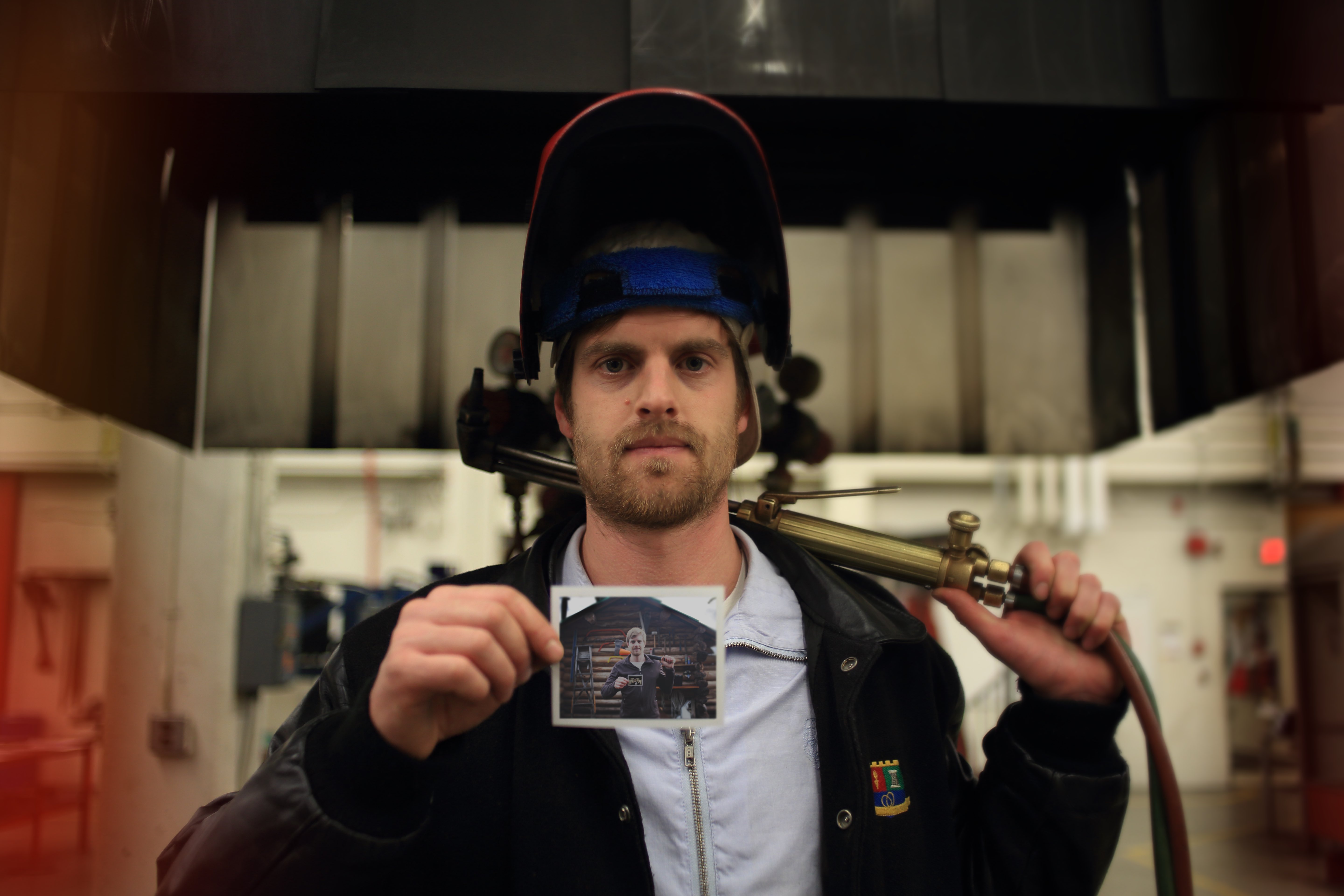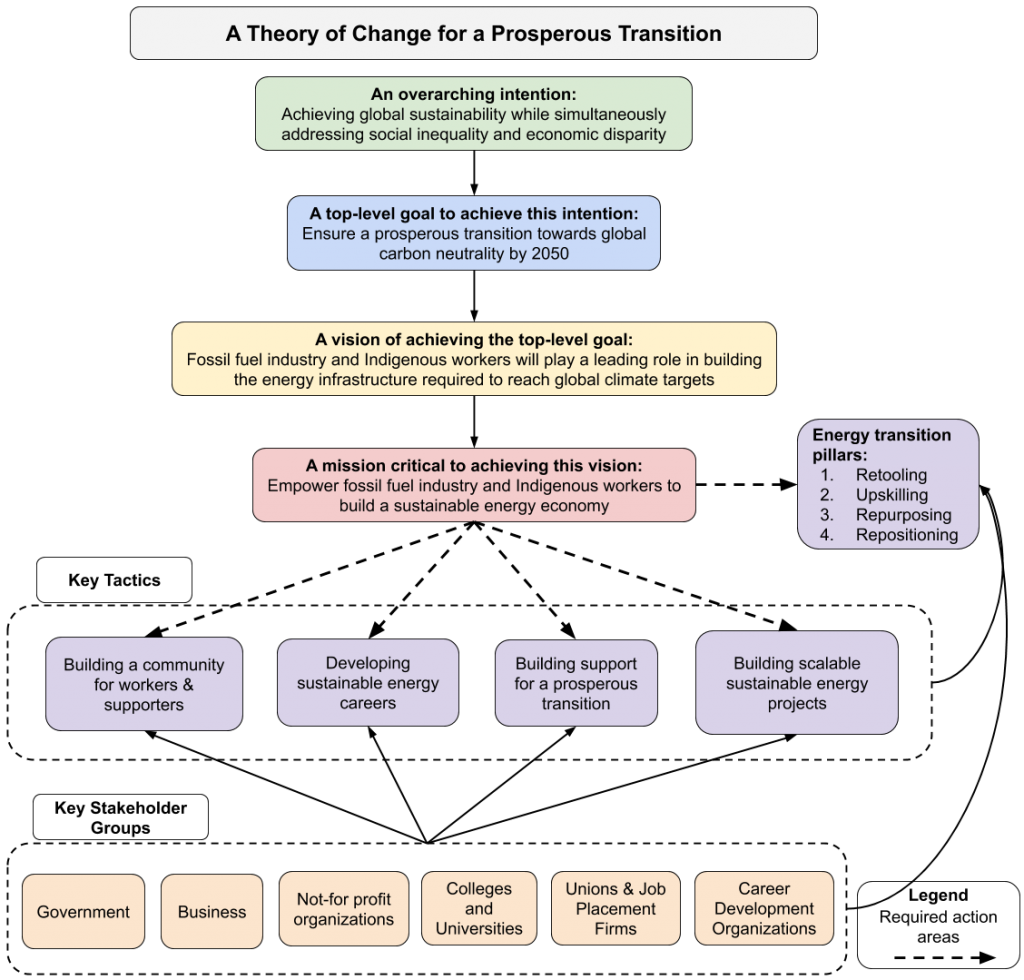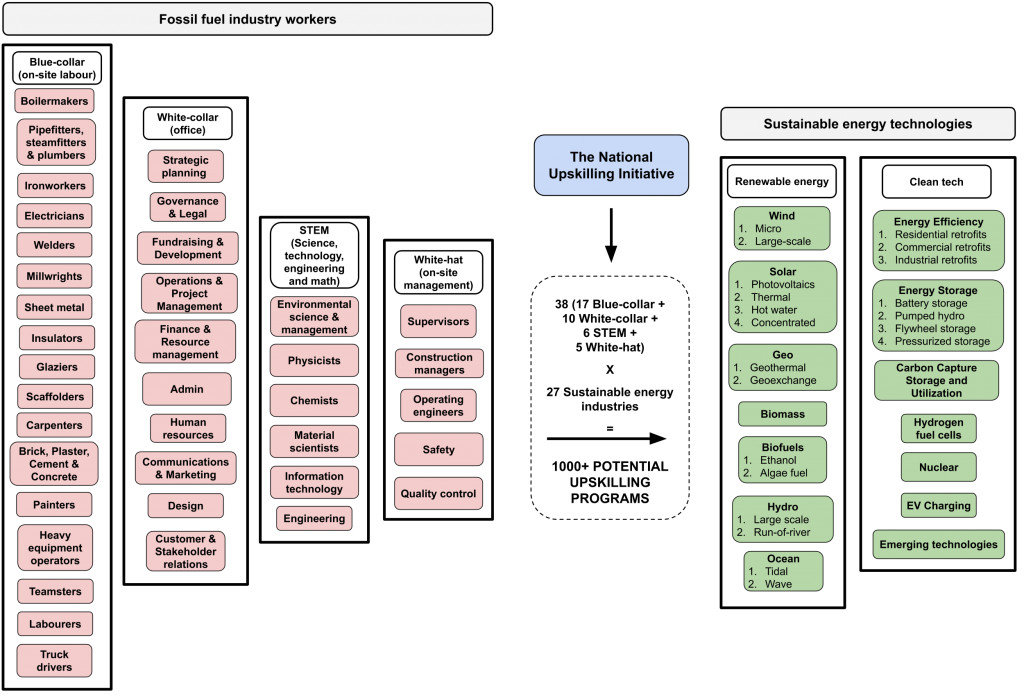How will climate change affect the future of employment in Canada?
Brookfield Institute report raises questions about the implications of four environmental trends on the labour market
Yasmin Rajabi and Erin Warner

The floods and tornado that hit Ottawa this past spring have cost the city $5.6 million and counting in damages (Chianello, 2019). Similar instances of climate change have devastated communities across Canada and will continue to do so as the climate crisis accelerates. In fact, the Insurance Bureau of Canada reported that the cost of insured damage due to severe weather was $1.8-billion last year, with other recent years as high as $4.9 billion (Scoffield, 2019). There is an urgent need for Canadians to anticipate and prepare for the shocks and stresses of a future affected by the changing climate – and to consider what can be done to mitigate the current course.
To help Canadians prepare for this future, and more specifically their future employment, the Brookfield Institute’s report Turn and Face the Strange identifies 31 trends with the potential to affect the labour market in the next 10-15 years (Thornton, Russek & O’Neil, 2019). This report is part of the Institute’s ongoing initiative, Employment in 2030, a national research project to develop a holistic forecast of in-demand skills, and the distribution of these skills across geographies, industries and demographic groups.
While Turn and Face the Strange is not a prediction of the future or a deep analysis of any one trend, it aims to spark exploratory and imaginative thinking and push readers to ask themselves “what if?” What if Canada sees a rise in wildfires, floods and mudslides? What if cases of mental-health issues associated with technology use continue to multiply? What if artificial intelligence (AI) becomes capable of performing creative tasks?
Key trends
The trends highlighted in the report were identified using a strategic foresight methodology called horizon scanning – a technique for gathering broad, emerging information in order to identify possible changes affecting a topic of study. We scanned academic journals, popular media and fringe news sources, unearthing more than 600 signals of change, which we synthesized into 31 trends that have the potential to affect the future of employment.
While many of us are well aware that technological change will continue to affect labour markets, it is also important to consider how broader environmental, social and political developments play a role. Environmental sustainability, in particular, is an area that we can no longer afford to ignore. To this end, we were able to identify four trends related to the environment that may have an impact on the future of work in Canada. As you read through each below, consider how these trends may affect your future job prospects or those of your clients.
Resource scarcity
As the climate crisis worsens, natural resources like clean air, water and sand could become scarce and therefore extremely valuable. According to the World Wildlife Fund (n.d.), by 2025, two-thirds of the world’s population may face water shortages. Resource scarcity across Canada and globally will affect industries that rely heavily on natural resources, such as energy, forestry and mining. Water-reliant sectors such as agriculture, food processing and manufacturing could struggle to maintain access to these resources. How will these industries develop new practices to conserve resources like paper and water? How will our policies and infrastructure change to adapt to water scarcity and air pollution? Will new, energy-efficient industries grow or develop in response to resource scarcity? How will we alter our habits to consume less?
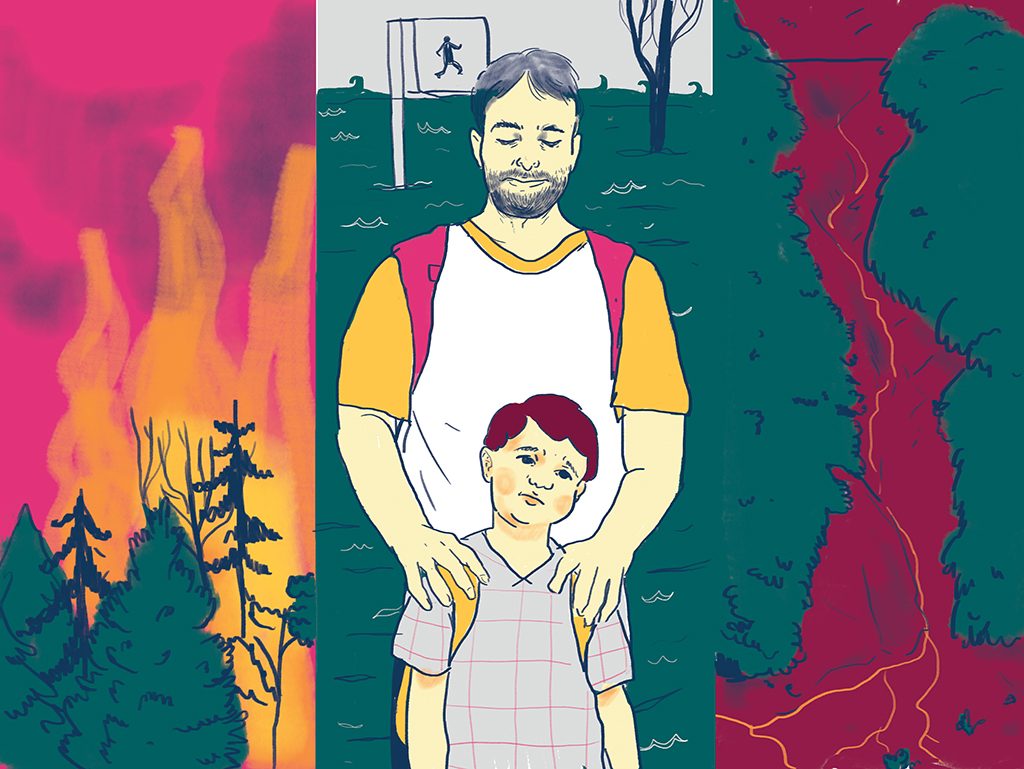
Wildfires, flooding and mudslides
In August 2018, British Columbia declared a state of emergency as a result of 559 forest fires that burned across the province (Johnston, 2018). All over Canada we are experiencing similar instances of wildfires, flooding and mudslides due to a rise in extreme weather conditions. The tourism industry may be affected should these natural disasters become more common. How will other industries that Canada is so well known for, such as forestry, mining and agriculture, be hurt? Will others benefit from these unfortunate incidents, such as infrastructure or goods and services that monitor or prevent floods and wildfires? What will the impact be on economic activity in regions more susceptible to climate disasters?

Climate refugees
As climate change continues to take a toll on the places we live, millions of people will be displaced globally. While the current legal definition of refugees in Canada does not include provisions for climate-related displacement, we need to start considering how we will respond to this global issue. How might people from regions that have been devastated by climate change use their first-hand experience to help respond to the international demand for solutions? Would a new source of talent reduce the cost of labour in certain sectors? How will the government and other bodies react to an increase in demand for settlement services?

Alternative energy
The demand for energy is only growing as technology permeates every aspect of our lives, from the trains we take to work to the smartphones that never seem to leave our hands. In 2016, Canadian companies spent $18.1 billion on in-house energy research and development (Statistics Canada, 2018). There has been a focus on generating energy that is clean, efficient, renewable and affordable. How will this affect the traditional, resource-based energy sector? If significant strides are made toward clean, inexpensive energy, more companies could invest in AI, tech systems and increased computational power. How might this affect demand for skilled workers to operate alongside these new technologies?
As author Roger L. Martin and professor Alison Kemper write, the climate crisis will no doubt require both restraint and innovation (Martin & Kemper, 2012). Restraint, as we adapt our behaviour to try to limit further damage. Innovation, as we work to develop new technology to fix what we have done and to help us find a new way forward. In this way, with the devastation of climate change also comes an opportunity for new advancements. When reflecting on what climate change will mean for the Canadian labour market, career practitioners should consider: What kinds of new companies will arise in its wake? What new solutions will be developed? Where are gaps likely to emerge in the near future and how can we take advantage of these opportunities? We urge you to explore how these four environmental sustainability trends will affect the future of work in Canada and consider what careers may change or emerge as a result.
Illustrations by Jesseca Buizon. Buizon is a Toronto-based illustrator and graduate of OCAD University’s illustration program. She creates her illustrations by merging traditional and digital mediums.
Yasmin Rajabi is a Project Officer at the Brookfield Institute for Innovation + Entrepreneurship, where she experiments with novel research methods to advance actionable innovation policy in Canada. Rajabi has an Honours BA in Public Policy and City Studies from the University of Toronto.
Erin Warner is a Marketing and Communications Specialist at the Brookfield Institute for Innovation + Entrepreneurship who is dedicated to making ideas and information easily accessible to a wide audience. She holds an MBA in technology and innovation from Ryerson’s Ted Rogers School of Management and an Honours BA in anthropology from Western University.
References
Chianello, J. (2019, June 26). Flood and tornado have cost city $5.6M — and counting. CBC. Retrieved from cbc.ca/news/canada/ottawa/flood-and-tornado-have-cost-city-5-6m-and-counting-1.5191498
Johnston, P. (2018, August 26). B.C. Wildfires 2018: State of emergency declared across province as 559 fires burn. Vancouver Sun. Retrieved from vancouversun.com/news/local-news/b-c-wildfires-2018-state-of-emergency-declared-across-province-as-566-fires-burn
Martin, R. L., & Kemper, A. (2012, April). Saving the Planet: A Tale of Two Strategies. Harvard Business Review. Retrieved from hbr.org/2012/04/saving-the-planet-a-tale-of-two-strategies
Scoffield, H. (2019, April 23). Flooding costs are rising like Canada’s rivers. The Toronto Star. Retrieved from thestar.com/politics/political-opinion/2019/04/23/flooding-costs-are-rising-like-canadas-rivers.html
Statistics Canada (2018). Energy research and development expenditures by area of technology, 2016. Retrieved from www150.statcan.gc.ca/n1/en/daily-quotidien/180828/dq180828b-eng.pdf?st=A85eCpkp
Thornton, J., Russek, H., & O’Neil, T. (2019). Turn and Face the Strange: Changes impacting the future of employment in Canada. The Brookfield Institute. Retrieved from brookfieldinstitute.ca/report/turn-and-face-the-strange-changes-impacting-the-future-of-employment-in-canada/




 As a career development professional working in primary and secondary schools, I realize that beginning career education and exploration in the early grades can be controversial. However, recent research including the CERIC-published book The Early Years, Career Development for Young Children by Mildred Cahill and Edith Furey (2017) and the Career-related learning in primary. What works? report by the Career and Enterprise Company (Kashefpakdel et al., 2018) provide support for this approach. Like these authors, I believe that “children create their own stories, but not in isolation” (Cahill & Furey, 2017, p. 64). Students have many co-authors, including teachers, who provide important context as they develop a vision of their possible future selves alongside their families.
As a career development professional working in primary and secondary schools, I realize that beginning career education and exploration in the early grades can be controversial. However, recent research including the CERIC-published book The Early Years, Career Development for Young Children by Mildred Cahill and Edith Furey (2017) and the Career-related learning in primary. What works? report by the Career and Enterprise Company (Kashefpakdel et al., 2018) provide support for this approach. Like these authors, I believe that “children create their own stories, but not in isolation” (Cahill & Furey, 2017, p. 64). Students have many co-authors, including teachers, who provide important context as they develop a vision of their possible future selves alongside their families.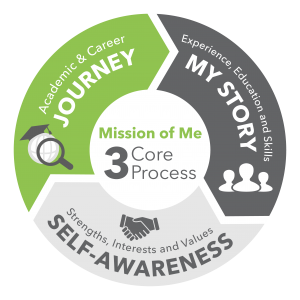 A framework within this called “Mission of Me” guides students through:
A framework within this called “Mission of Me” guides students through:

 When I was considering my career path at the end of high school, the trajectory seemed pretty straightforward: choose a college/university program, complete it and get a job. I had never considered what lay ahead after getting that job and was naive to the fact that there could (and would) be challenges and changes, and that my path wouldn’t always go in a straight line. I didn’t anticipate that I would be at a crossroads in my mid-30s, with big and scary decisions to make.
When I was considering my career path at the end of high school, the trajectory seemed pretty straightforward: choose a college/university program, complete it and get a job. I had never considered what lay ahead after getting that job and was naive to the fact that there could (and would) be challenges and changes, and that my path wouldn’t always go in a straight line. I didn’t anticipate that I would be at a crossroads in my mid-30s, with big and scary decisions to make.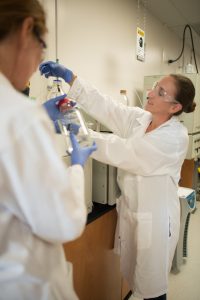

 Our coastlines are being redefined, forests and grasslands destroyed, homes, schools and critical infrastructure damaged. Livelihoods are endangered, our way of life is challenged and our traditions threatened. This is climate change transforming the world as we know it.
Our coastlines are being redefined, forests and grasslands destroyed, homes, schools and critical infrastructure damaged. Livelihoods are endangered, our way of life is challenged and our traditions threatened. This is climate change transforming the world as we know it.

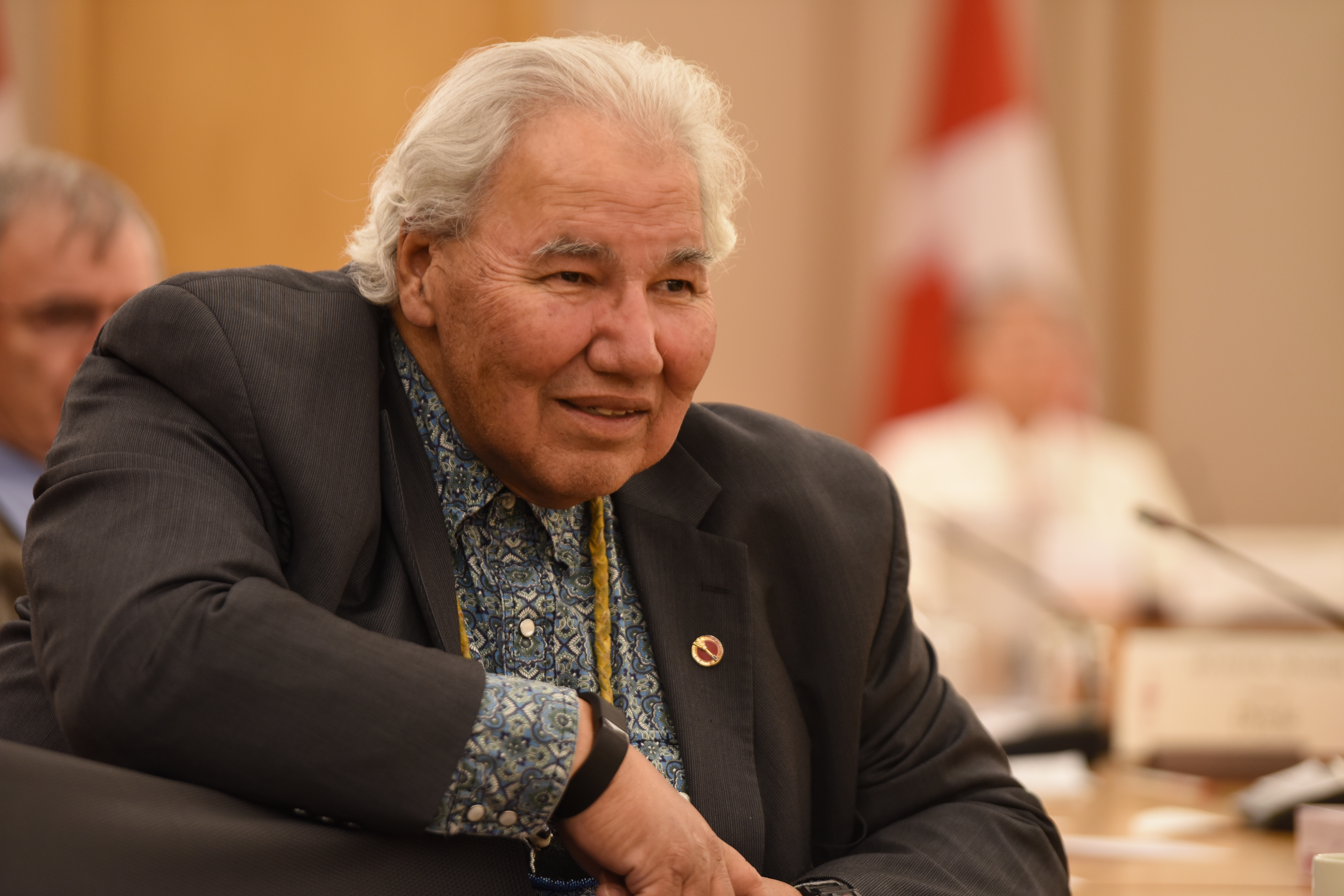
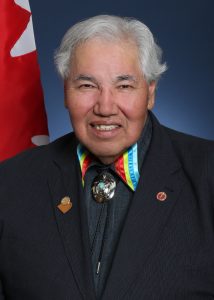 A career is a life path. Career development helps us achieve our individual sense of self and it allows us to contribute to society’s collective sense of self. A society and a people are strengthened when its members feel fulfilled in their life’s journeys.
A career is a life path. Career development helps us achieve our individual sense of self and it allows us to contribute to society’s collective sense of self. A society and a people are strengthened when its members feel fulfilled in their life’s journeys.
 Canada has joined a bid among developed countries to become a leader in fighting climate change while protecting jobs. The government adopted the Solidarity and Just Transition Silesia Declaration in 2018, which emphasizes the importance of decent work in the shift toward climate-resilient economies. The Canadian House of Commons declared a national climate emergency on June 17, 2019.
Canada has joined a bid among developed countries to become a leader in fighting climate change while protecting jobs. The government adopted the Solidarity and Just Transition Silesia Declaration in 2018, which emphasizes the importance of decent work in the shift toward climate-resilient economies. The Canadian House of Commons declared a national climate emergency on June 17, 2019.

 Climate change will have important impacts on society, including the workplace. Environmental professions will be both negatively and positively affected in ways that are unique to this field, as well as by trends that will affect the workplace in general.
Climate change will have important impacts on society, including the workplace. Environmental professions will be both negatively and positively affected in ways that are unique to this field, as well as by trends that will affect the workplace in general.
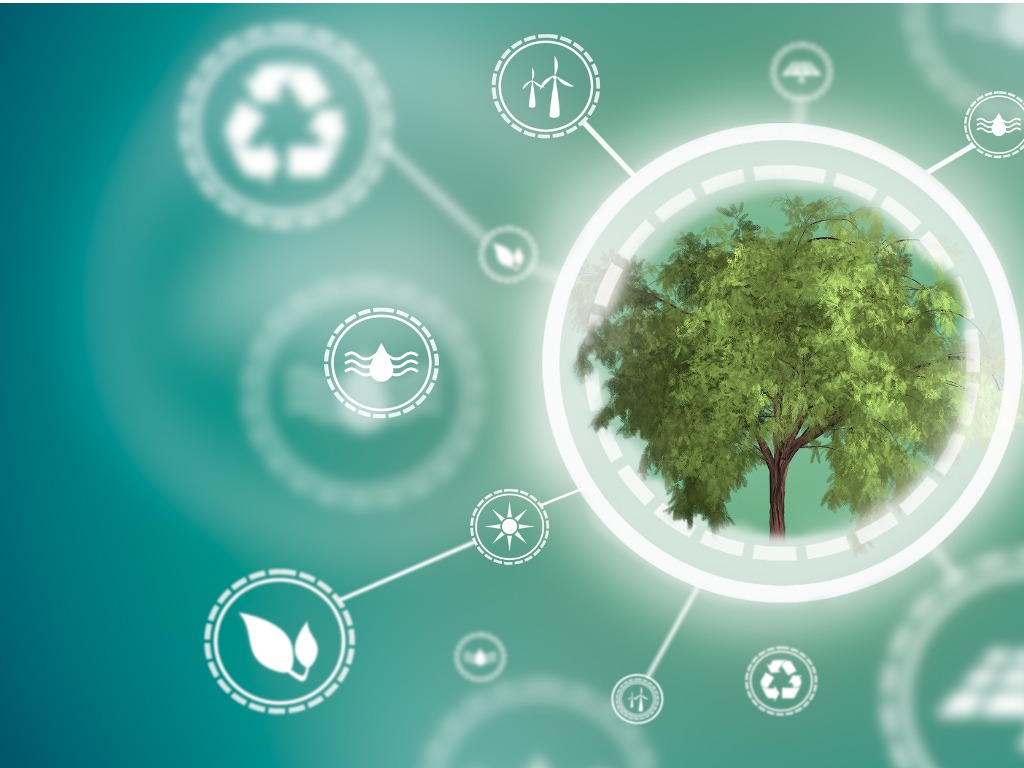
 When I reflect on my career of more than 17 years in the sustainability sector, I realize I have made some unusual choices. I have changed my pathway at four distinct milestones of my career, from a precious metals chemist, to a narcotics drug distributor, to a water industry analyst, to a sustainability program manager. I have picked up many career strategies along the way that I am happy to share with anyone who will listen – especially those aspiring to join the sustainability sector.
When I reflect on my career of more than 17 years in the sustainability sector, I realize I have made some unusual choices. I have changed my pathway at four distinct milestones of my career, from a precious metals chemist, to a narcotics drug distributor, to a water industry analyst, to a sustainability program manager. I have picked up many career strategies along the way that I am happy to share with anyone who will listen – especially those aspiring to join the sustainability sector.